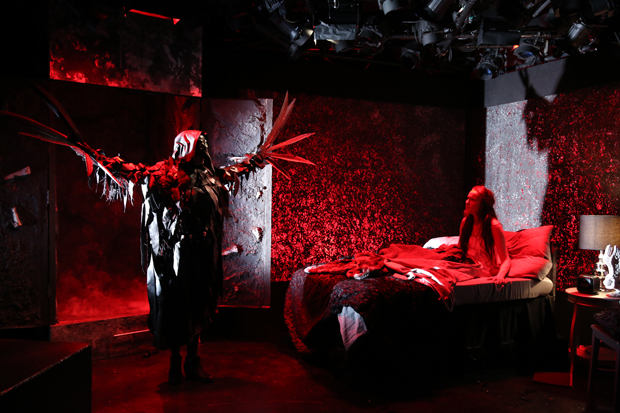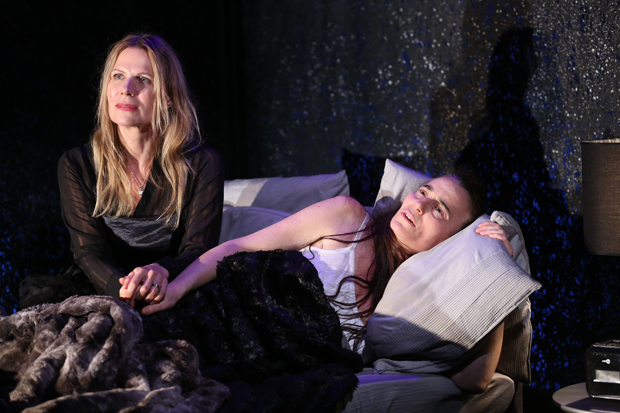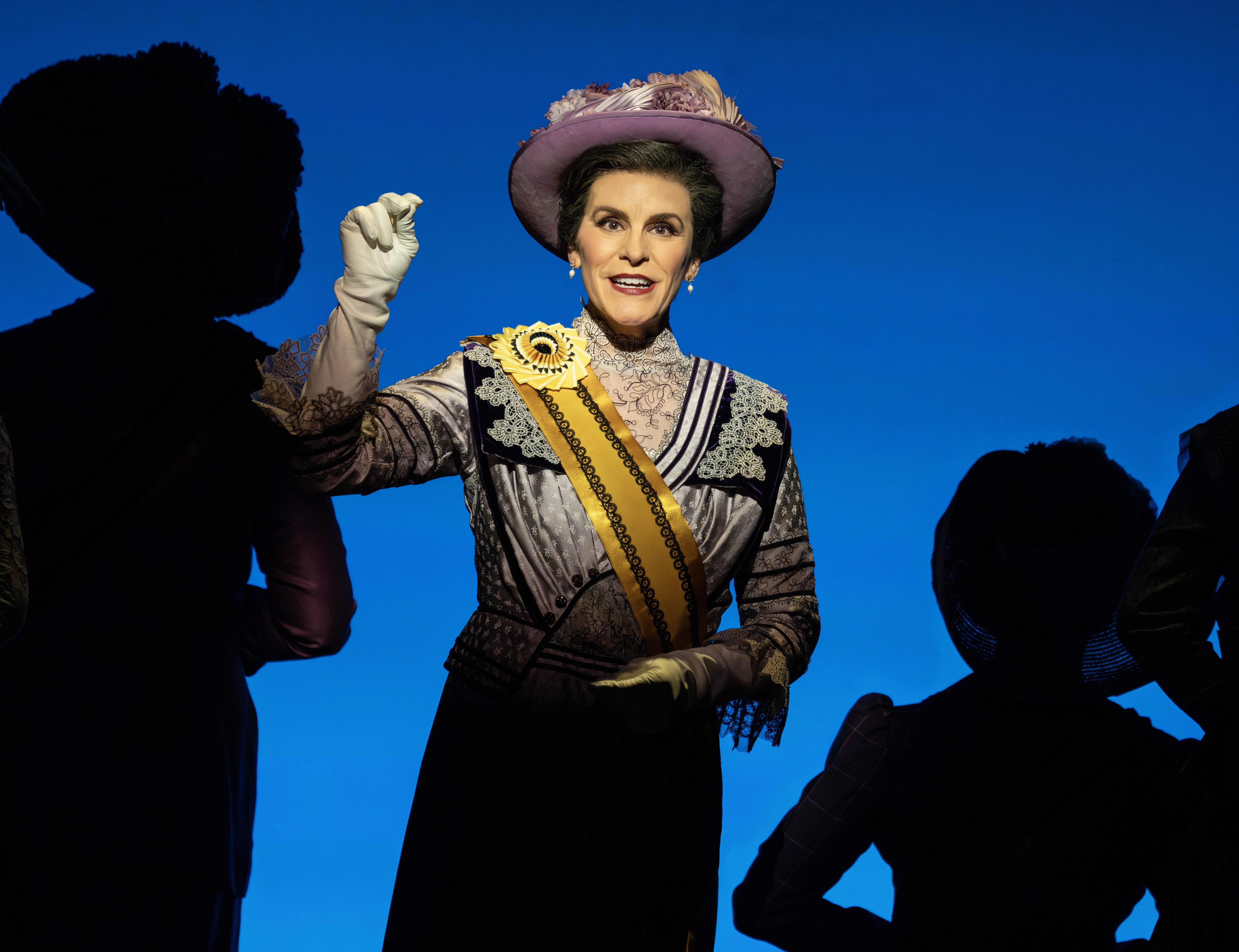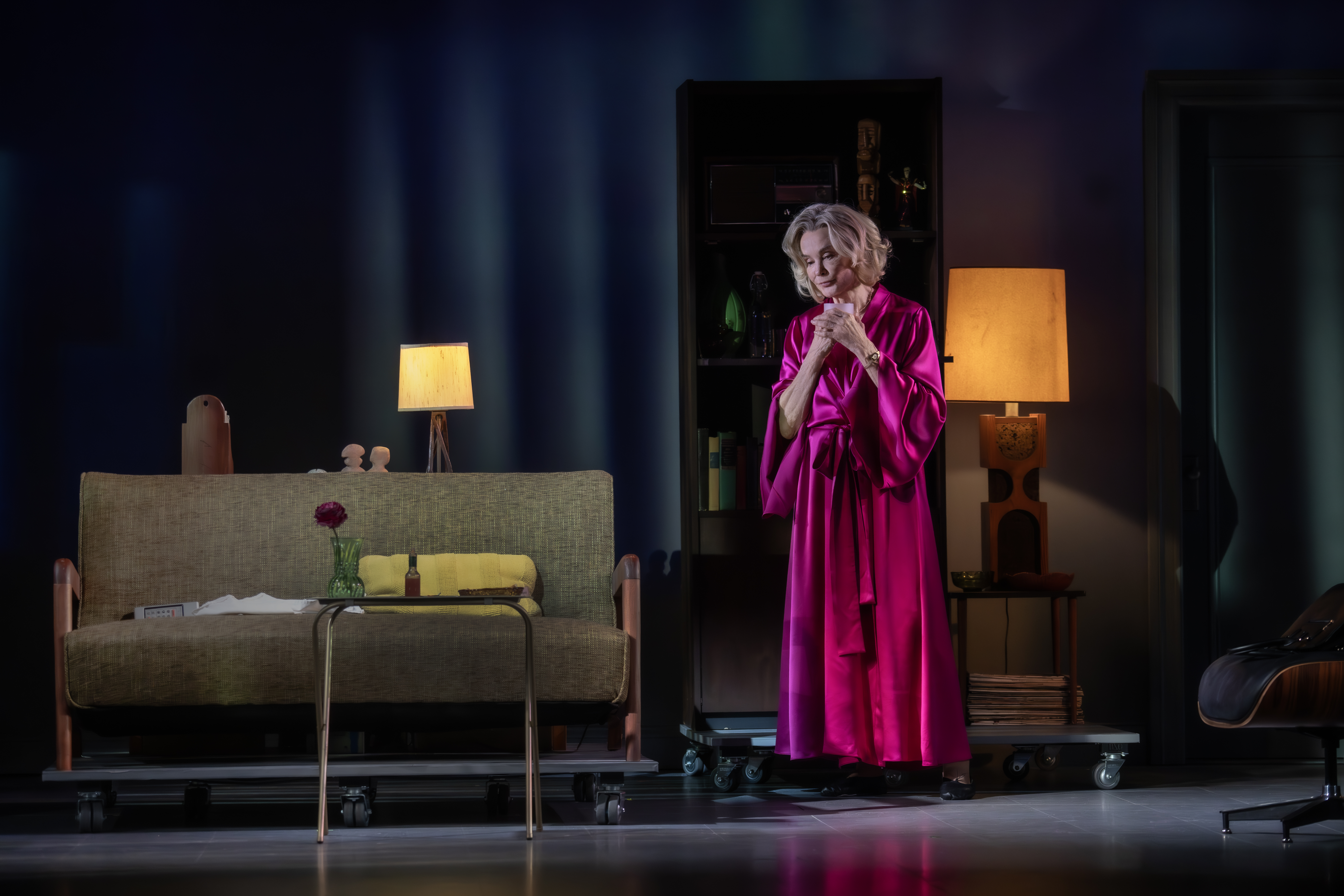Death Becomes Her in Woman and Scarecrow

(© Carol Rosegg)
A woman lies dying in her bed. A scarecrow watches over her, keeping the grim reaper at bay. Thus begins Woman and Scarecrow, a new play by Marina Carr at the Irish Repertory Theatre.
Woman (Stephanie Roth Haberle) is in her mid 40s, the mother of eight children, and unhappily married to Him (Aidan Redmond), whom she chose for convenience instead of love. She doesn't have much time left, the unspecified disease having overtaken her body. With Death literally knocking on her closet door, Woman has only one ally: Scarecrow (Pamela J. Gray), who may or may not be a morphine hallucination, and is the only thing between her and the big sleep.
Woman was never happy, and she willed her unhappiness. As Aunty Ah (Dale Soules) the sour, religious woman who raised her after the death of her mother, notes, Woman's demise could have been prevented if only she had gone to the doctor. "I'm dying of spite," Woman tells Scarecrow. However, right before it all ends, she realizes that that reasoning is not the right way to go about things.
Appropriately situated in the Irish Rep's small W. Scott McLucas Studio space, Woman and Scarecrow is directed with the right amount of etherealness by producing director Ciarán O'Reilly. The play itself is nonlinear, and O'Reilly's physical production gives off a similar vibe: the walls of Charlie Corcoran's set are sharply askew, Michael Gottlieb's lighting seems to age Woman right before our eyes, Ryan Rumery's original music is like a constant rumble underneath the action, and Bob Flanagan's puppet and mask design gives us the perfect chill. Wisely, Whitney Locher's homey costuming is the only aspect that ties us into reality.

(© Carol Rosegg)
The performances are similar. As characters, Him and Aunty Ah are earthbound, while Woman and Scarecrow are both in their own version of reality. With that in mind, Redmond and Soules are the play's connections to the human world, and they bring with them recognizable emotions: remorse, sadness, and mordant humor. Gray is suitably imposing and heightened as Scarecrow, a character that may or may not be a hallucination. Only Haberle's performance feels tonally out of sync, pulsing with energy that feels too excessive for a person who will be dead in just under three hours. This vitality is strangely jarring, and throws off the momentum of the piece as a whole.
As the piece continues, Woman and Scarecrow becomes less a treatise on death and more a discourse about why life is meant to be valued. But Carr's script, like Woman herself, doesn't discover that until it's too late. Bogged down by symbolism, overly poetic, and circular in its arguments, this is a relentlessly depressing play in desperate need of both an editor and some levity. It should make us want to stop and smell the roses, but leaves us feeling miserable instead.










